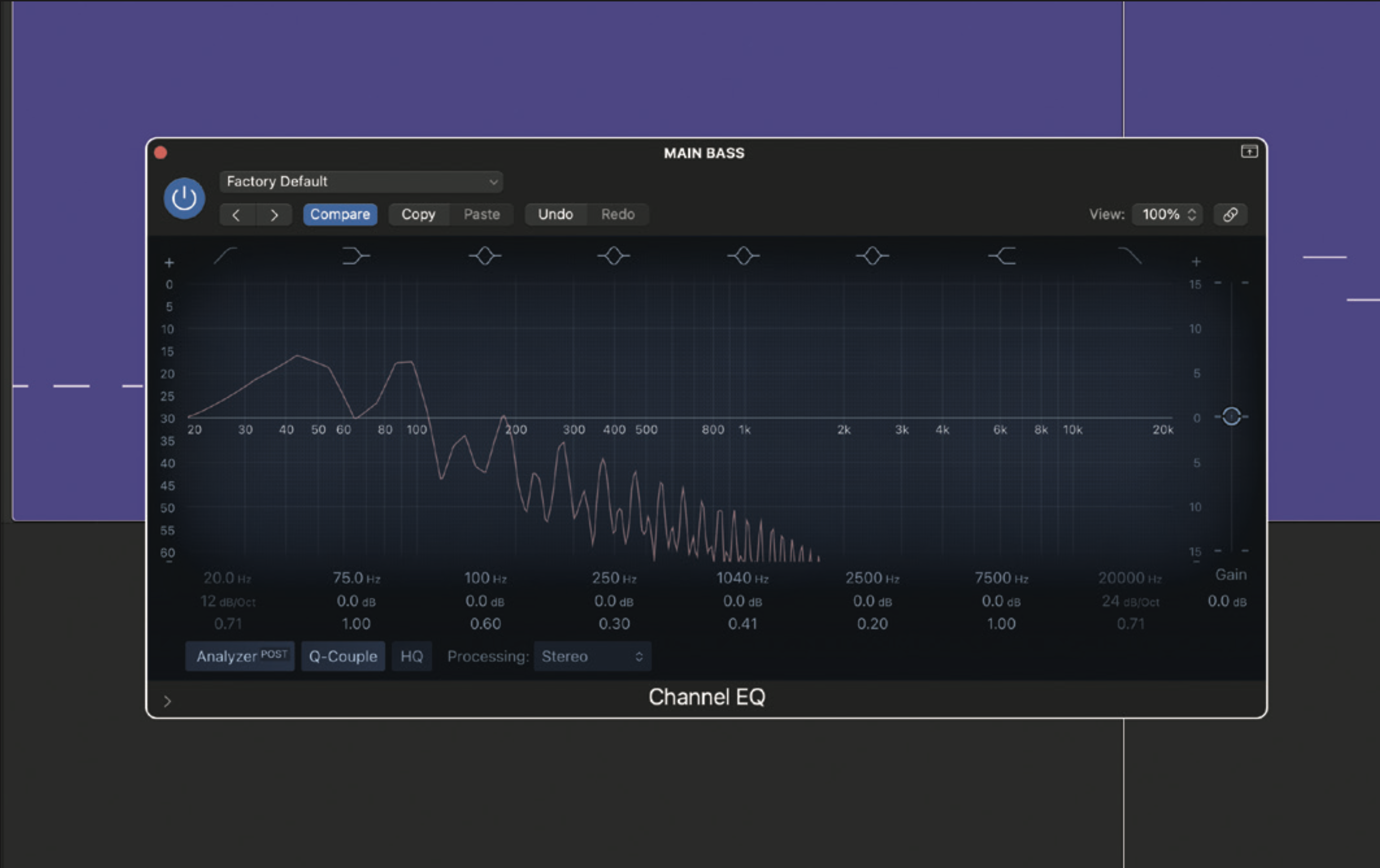
With bass, we’re usually trying to create a solid and more uniform outcome and a multistage approach works best.
Achieving consistency starts with adjusting any notes or frequencies that jump out and making sure the sub-frequencies aren’t too dominant. So the first plugin in the chain needs to be a flexible parametric EQ with frequency analyser.
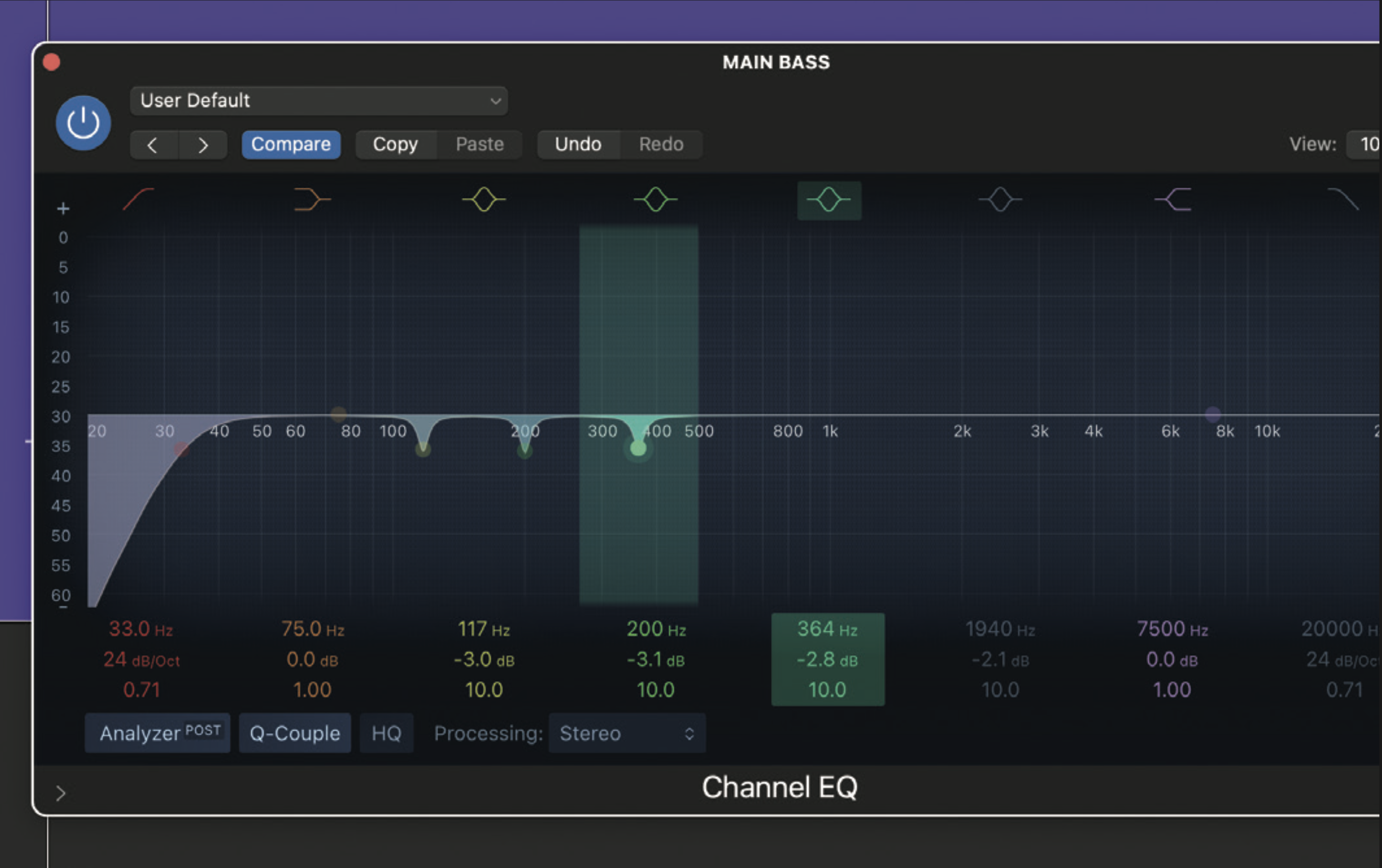
Set up the EQ with a few narrow peak bands (Q=10 is a good compromise). Set the gains to 0dB and spread the frequencies towards the low end. Activate the low-cut filter, setting a medium slope (24dB/octave is a good option). This provides the basic setup ready for setting frequencies and gains as required.
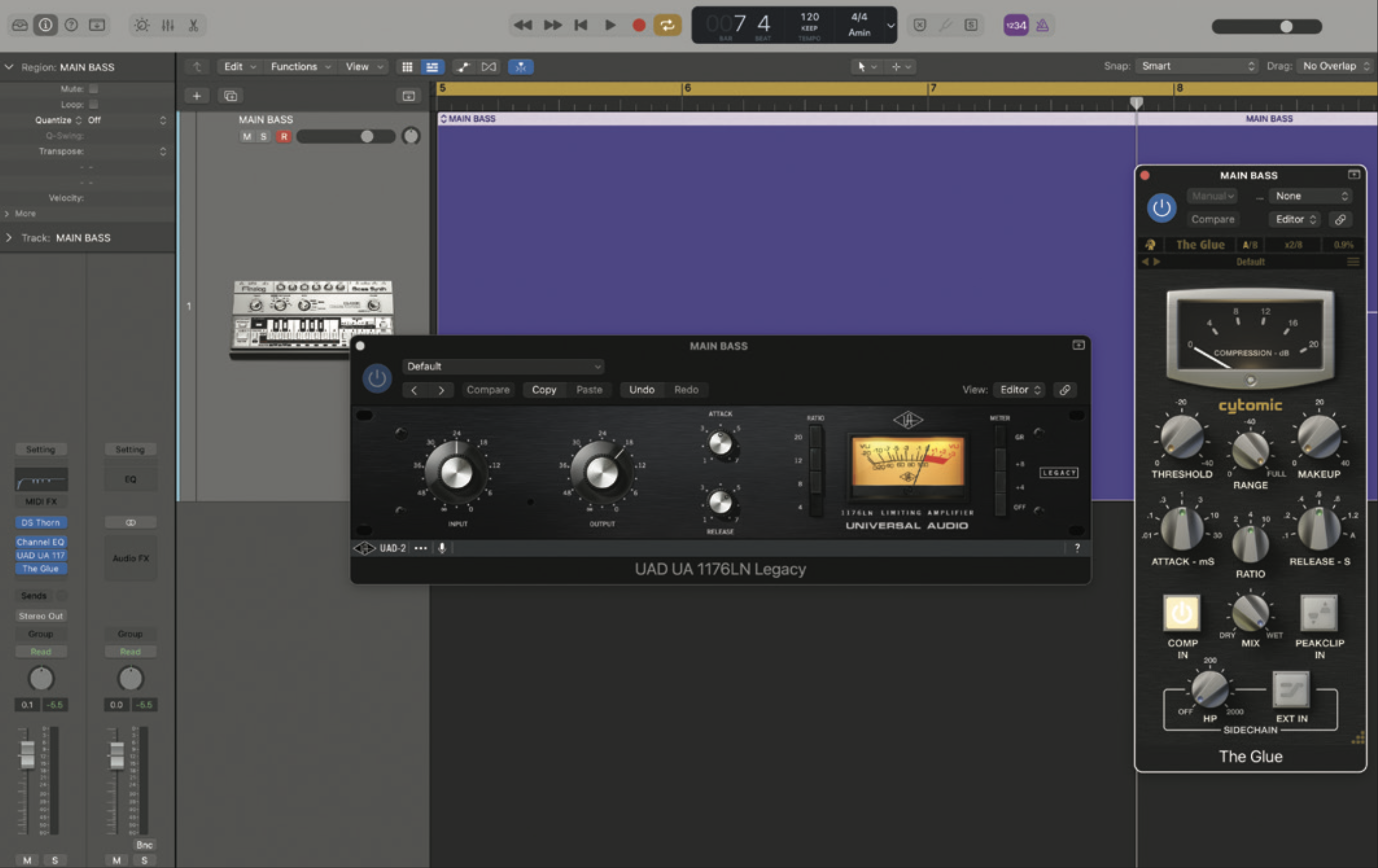
With preliminary EQing sorted, we can now look at shaping the bass using compression. It can sometimes be tricky compressing bass with a single compressor, so our bass chain includes two. Importantly, you don’t have to use both if they’re not needed. The first compressor in the chain should be a fast design such as a FET.
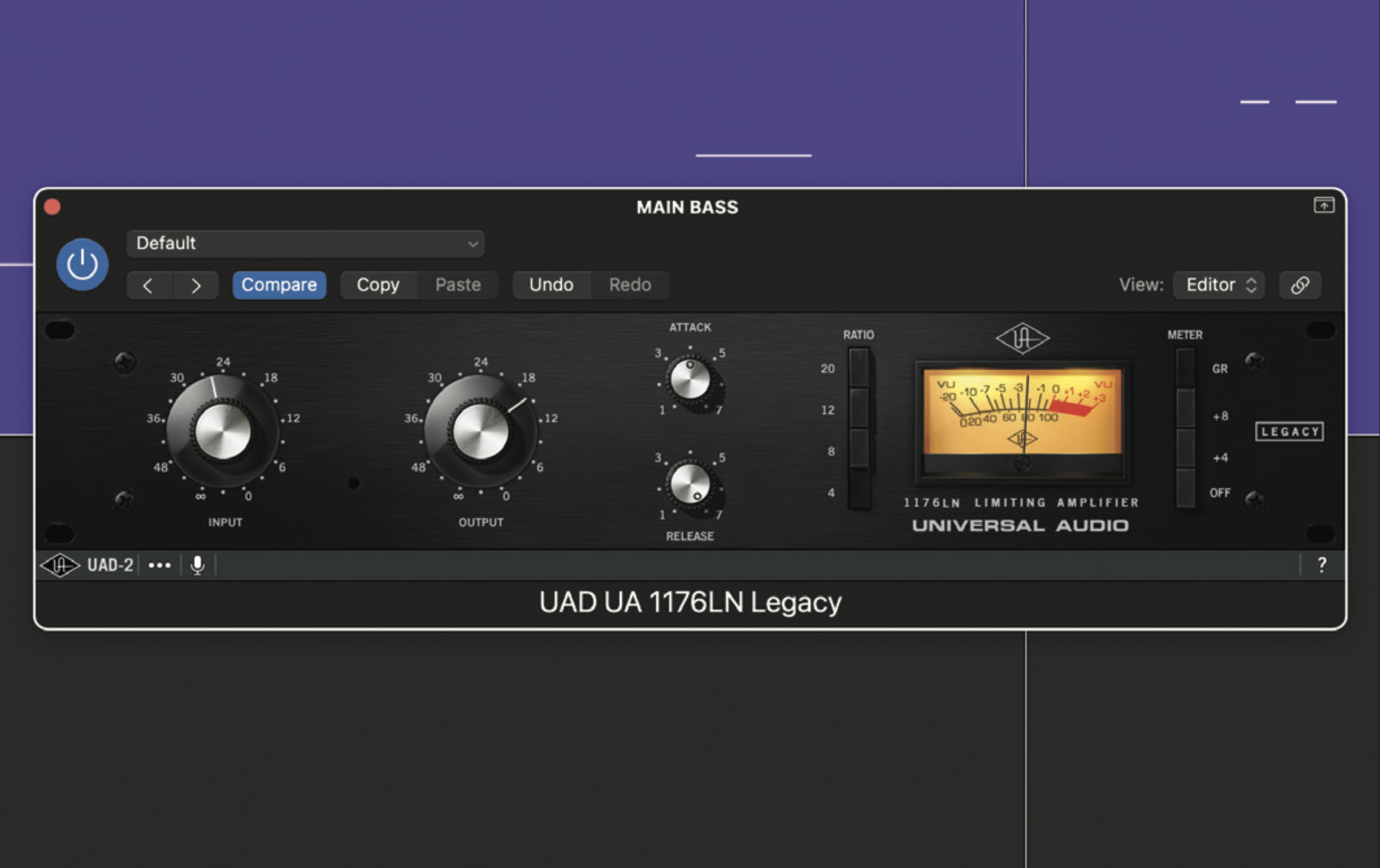
Set the attack medium fast and the release fast with a 4:1 ratio. The purpose of this compressor is to add bite and aggression to the bass. When you load up the mixing strip, all you need to do is set the threshold to achieve the desired amount. That said, you can easily get less audible outcomes by increasing the release time.
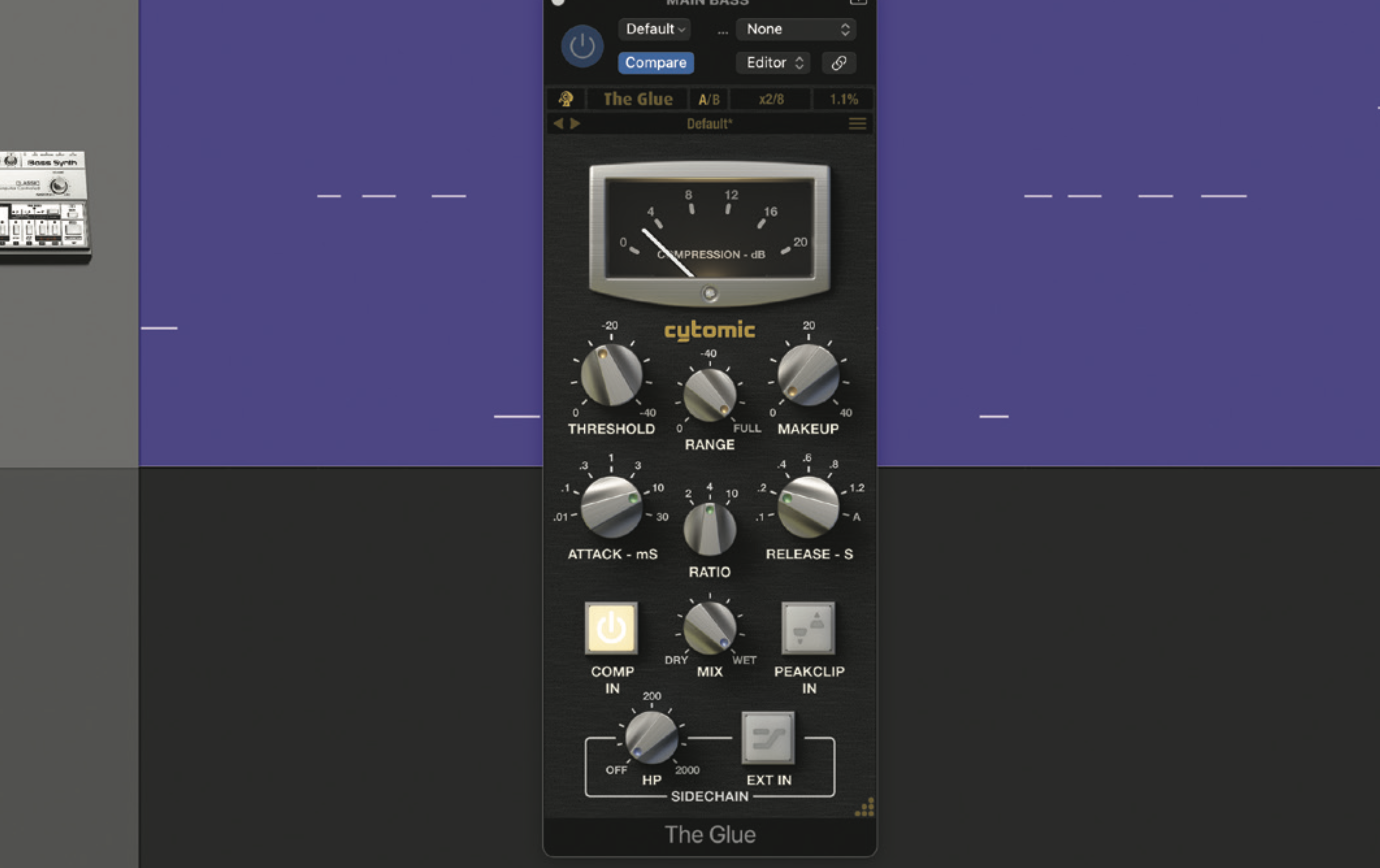
The second compressor acts more as a level-smoothing device. A quality VCA is often the best choice for this job. Set the attack to medium slow (10ms) and the release to medium fast (0.2s) with 2:1 or 4:1 ratio. Adjust the threshold to achieve just a few dB of gain reduction.
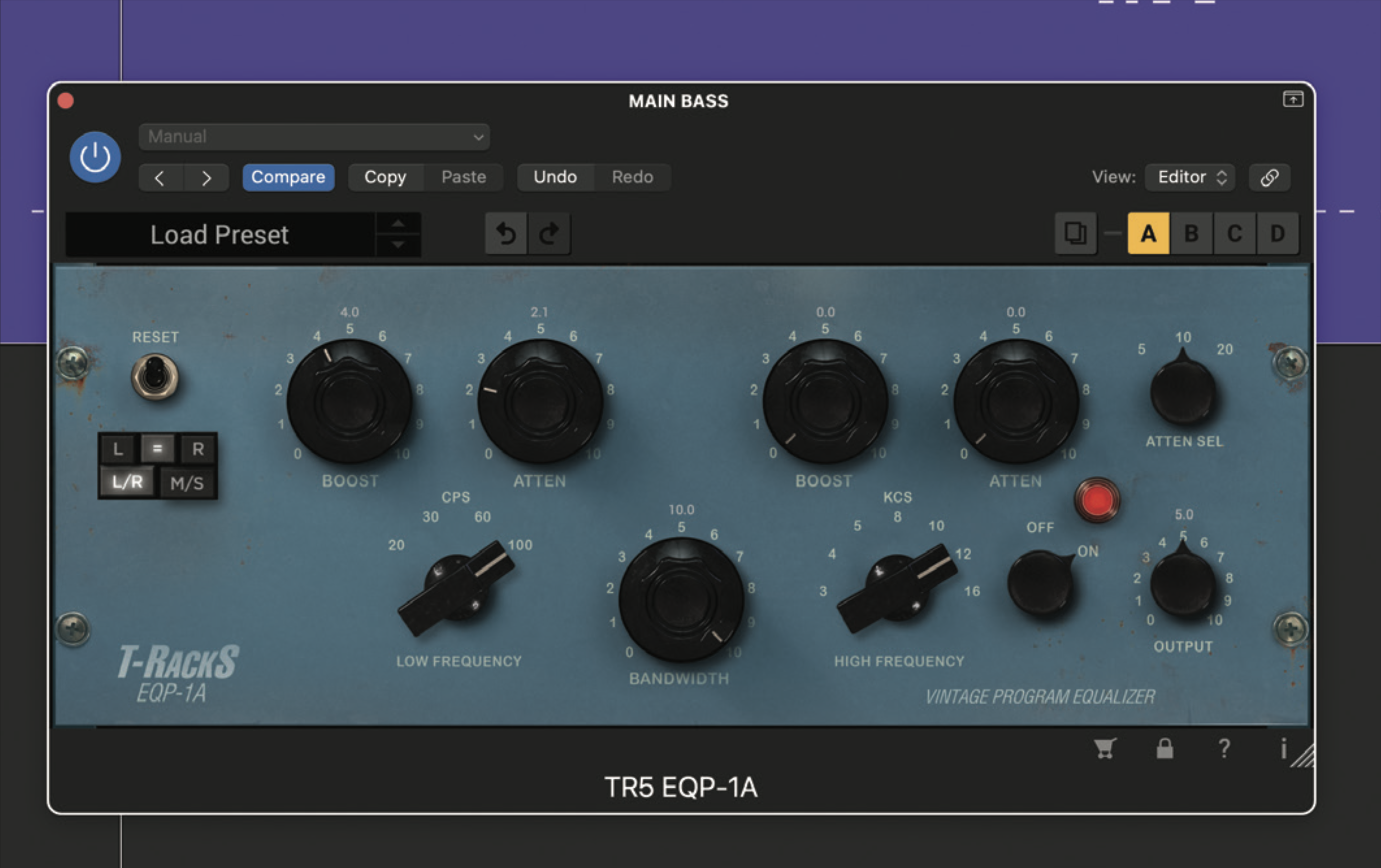
The last plugin in the chain is a bass-end-sweetening EQ. Using a classic emulation here such as the EQP-1A achieves a desirable low-end boost or cut (60Hz and 100Hz are the best frequencies) and adds some harmonics. You can also use the well-documented EQP-1A combined boost and cut trick, which dips the low mids.







